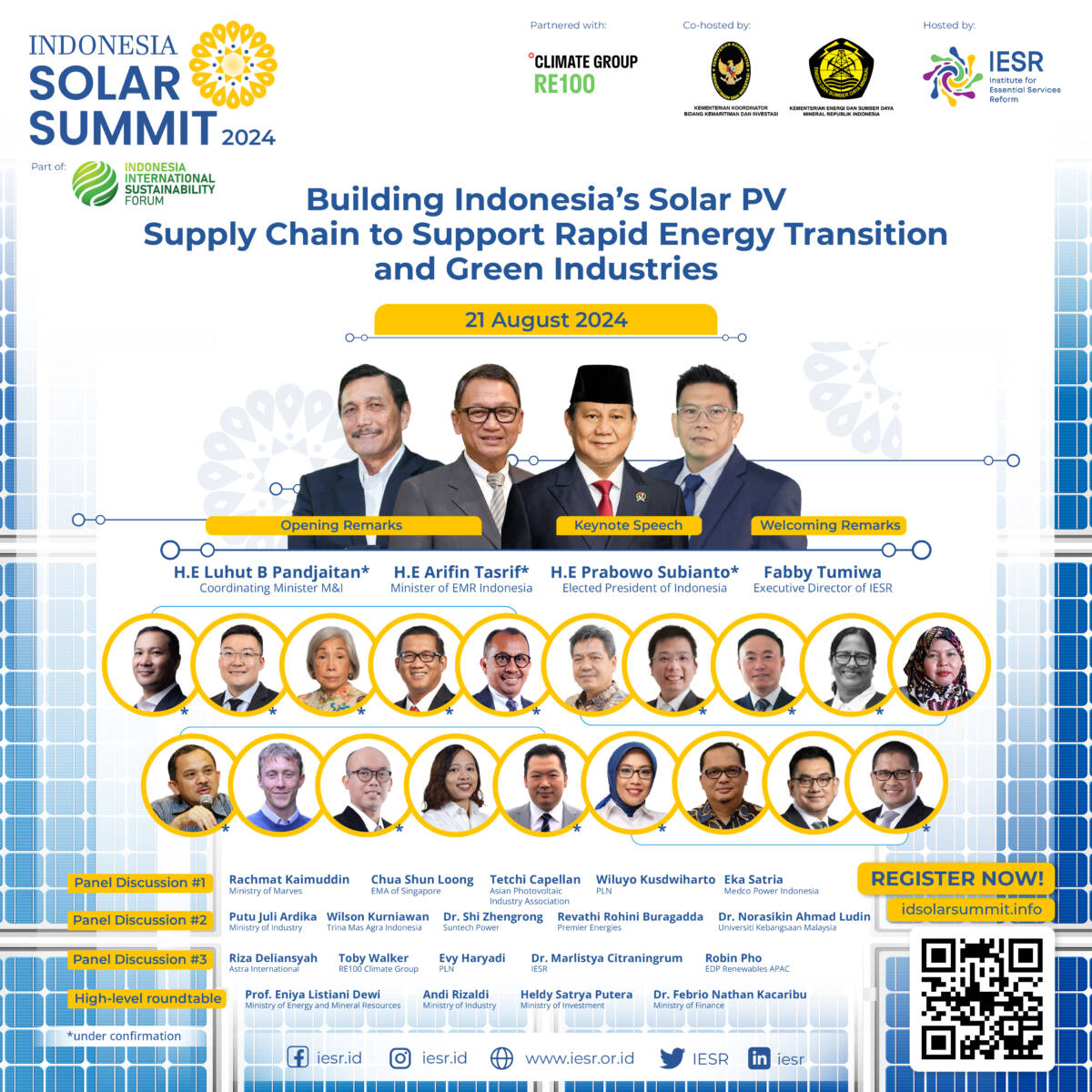
Indonesia Solar Summit 2024
Background
Solar energy (photovoltaics) has made it into Indonesia’s mainstream regulations, power sector planning, and net-zero emission pathway. With a technical potential of 3,294 GWp (MEMR, 2022) and reaching almost 20,000 GWp based on land availability and suitability (IESR, 2021), Indonesia could benefit from massive deployments of solar energy for utility-scale to small scale plants – on the ground, water bodies, to rooftops.
Individual consumer and company solar energy has grown well over the previous five years, while utility-scale solar has not. Only the 192 MWp Cirata floating solar plant exceeded 50 MW over the same period. Indonesia’s absence of an enabling environment, including regular, transparent procurement processes, hinders big-scale renewable energy development, which investors view as a bad investment signal.
Multiple constraints delay PLN’s implementation of large-scale solar PV projects supported by financial institutions, notably the Hijaunesia Program. Ministry of Industry local content requirements requiring a certain level of local content in national electrical projects are important. The lack of tier-1 solar PV module manufacture in Indonesia and these limitations have hindered international financial institutions from financing the projects.
Therefore to accelerate Indonesia’s solar energy journey and solidify its solar supply chain leadership, interests and development must remain consistent and improve.
Objective
- White paper on Indonesia’s solar energy supply chain landscape and strategy for government.
- High-level policy recommendations for the President
- Collective project pipelines of a minimum of 3 GW by 2025
- Selected solar supply chain manufacturing opportunities (book of prospects)
- Investment interests are shown by a letter of intent and/or memorandum of understanding.
Presentation
Accelerating The Development of Green Supply Chain – H.E. Luhut Binsar Pandjaitan, Menteri Koordinator Bidang Kemaritiman Republik Indonesia
H.E-Luhut-Binsar-Panjaitan_ISS-2024Energy Transition Policy to Achieve Net Zero Emission : Solar Energy – Sahid Junaidi, KESDM
Sahid-Junaedi_ISS-2024Strengthening Cross-Border Collaboration: Electricity Trading and RE Supply Chain Development Potential – Eka Satria
Panelis-1-Eka-Satria_ISS-2024Road To ISF 2024: The Future of Energy Value Chains in The Regional Low-Carbon Economy Development – Andi Yulianti
Panelis-1-Andi-Yulianti_ISS-2024TMAI Company Introduction and Solar Energy Potential in Indonesia – Wilson Kurniawan
Panelis-1-Wilson-Kurniawan_ISS-2024How to Grow Indonesia’s Solar Future – Grant Hauber
Panelis-2-Grant-Hauber_ISS-2024Energy Transition in Malaysia – Norasikin Ahmad Ludin
Panelis-2-Norasikin-Ahmad-Ludin_ISS-2024Profil Industri Modul Surya dalam Negeri dan Tantangan Modul Surya di Indonesia – Dwi Handiyatmoko
Panelis-2-Dwi-Handiyatmoko_ISS-2024Introducing RE100 – Ross Mitchel
RE100-IESR-Launch-x-ISS-presentation_
